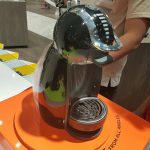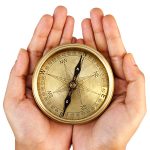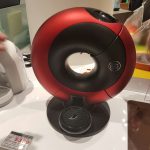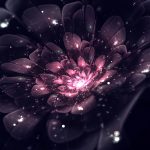I had known about TeamLab for quite some time during my research work into electronic generative art, since they are one of the bigger names, alongside artists like Refik Anadol. TeamLab is a collection of interdisciplinary artists who utilise contemporary technology to navigate and comment on art,science, technology and the natural world. They explore a relationship between humans and nature,… Read more →
Thoughtful Interaction Design – Reading Response
In this book, they talk about the advent of the digital media and how it has influenced how we use, consume and design for a intangible world. The rise of the digital medium has revolutionized our lives, from the way we live to the way we think. This meant that design as a whole had to change as well. It… Read more →

Chipchase – You Are What You Carry – Reading Response
In this chapter by Chipchase, it talks about how we are defined by our possessions. They tell a story about us, about our preferences, tastes, motivations, and much more. Chipchase mentions an idea of range of distribution. This is rather interesting to me, as I am someone who values comfort and convenience, especially so when I am working. In that… Read more →

Chipchase – Calibrating Your Cultural Compass – Reading Response
In this chapter, Calibrating your cultural compass by Chipchase, it talks about how one has to attune themselves to their environment through immersion in order to receive the most experience and information, the premise of design research. How can you design a product for an audience that you have only surface knowledge of? In a world where we have easy… Read more →

The Design of Everyday Things – Reading Response
This book, Design of Everyday Things talks mainly about Norman Don’s experience with regards to the psychology of designing, and why we have problems in our daily lives. “Why are you having problems?” I find his answer rather intriguing. “You are too logical.” Much of machine or product designed nowadays has too many functions, your rice cooker has 7 different… Read more →

Trip To Harvey Norman
The penguin and the hola hoop, 2 very different designs of one product, the coffee machine. One reflects a certain playfulness and joyfulness, while the other a sleek, modern design that reflects professionality. Both products show an emphasis on organic forms and shapes, but reflect the form in different manners. The use of glass seems prevalent in… Read more →

Chaotica Renders + Test Animations
Continuing work from before, I did abit of reading onto the origins of fractal generation, and came across a research paper by Scott Draves, detailing the mathematics behind the whole fractal process, formulas for the functions behind the scripts, as well as the origins of the .FLAM3 algorithm. (http://flam3.com/flame_draves.pdf) Next I experimented with a more geometry assembly of scripts, resulting… Read more →
Form – Function – Emotion
The 3 Influencing factors of a product are Form, Function and Emotion, with each product favouring one over the others, creating a variety of different products with very similar functions, but appeal to different people. The Large format camera is what i would consider Function focused, as its not portable, the look of it is very raw and mechanical.… Read more →

Chaotica Research and Documentation Part 1 + Experiment
I decided to experiment with Chaotica first, given that it was intended to be a straight up upgrade to Apophosis. First thing i noticed was the new Progressive Rendering engine that was implemented, which basically meant that Chaotica would constantly render my image at increasing sample levels until i set a cap, or stopped the render. This saves ALOT of time. Next, since JWildfire does not… Read more →

Initial Ideation – Problems and Hurdles
For my Media Art Nexus project, i will be expanding upon my previous work of Fractal Generation. Previously, I focused more on using the process itself to generate an aesthetically pleasing image, as i struggled with getting the program to do as i wanted. As a result, my final products were random to some extent. (I will document the process… Read more →
